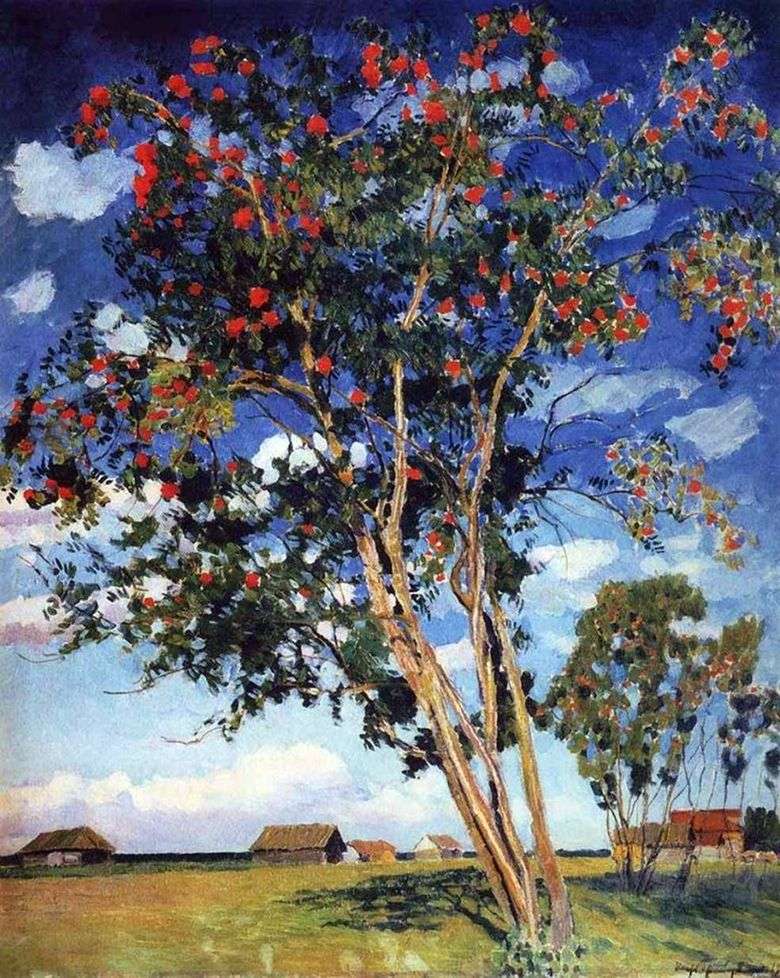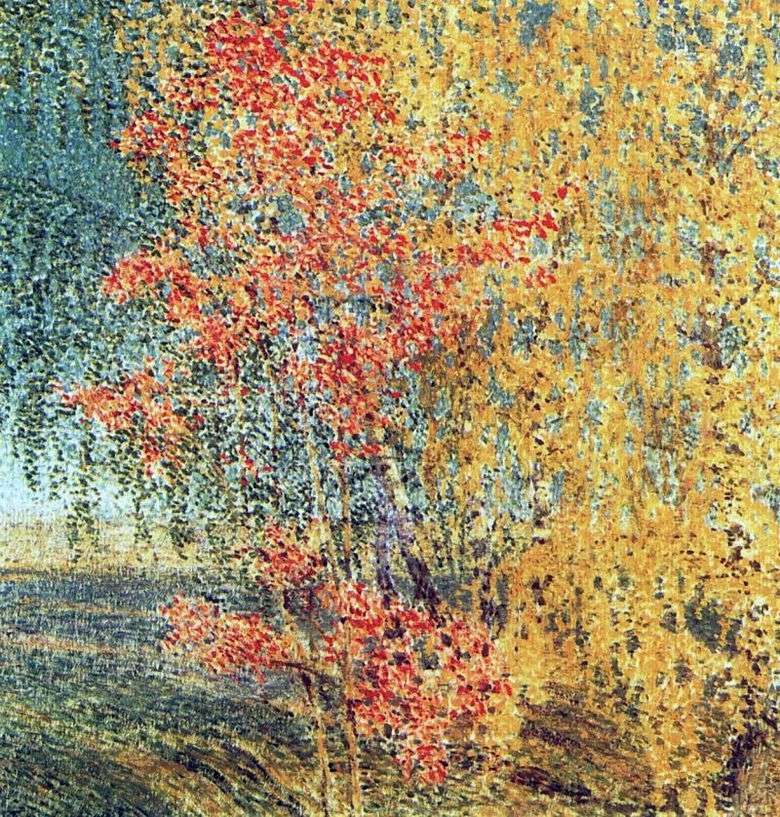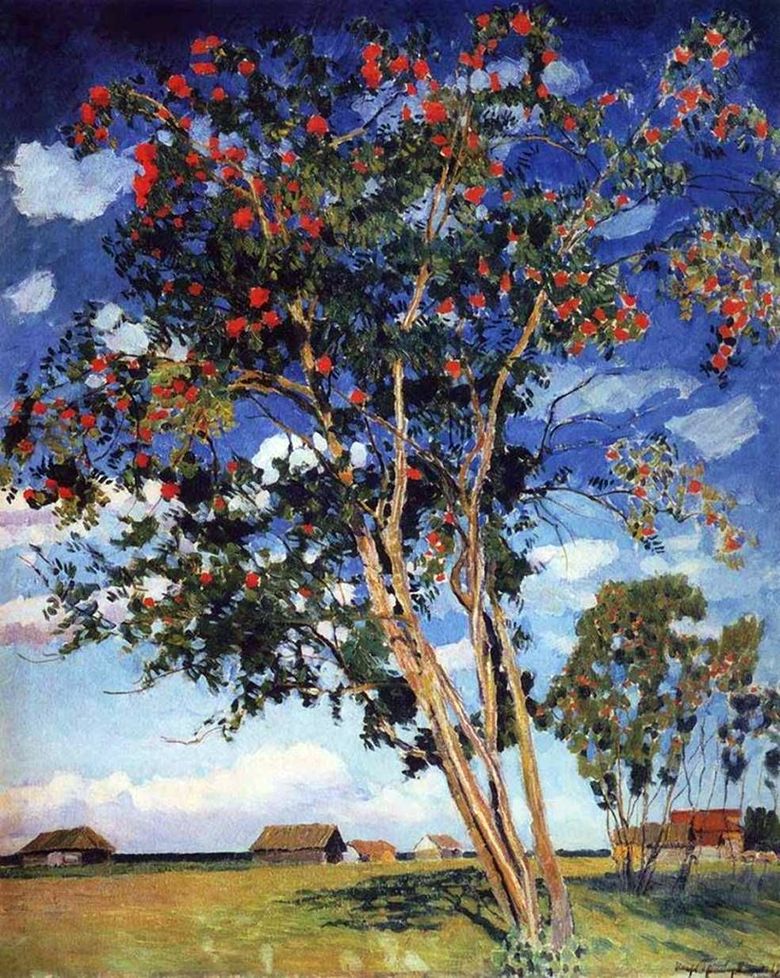
The painting “Rowkins” by Igor Grabar was written in 1924, the researchers of the artist’s work refer to it to the late period of his work. After fourteen years of studying scientific activity, the artist again turns to drawing and new masterpieces appear from under his brush.
Analysis of this picture shows the relative simplicity of composition. The artist, on the background of a rural landscape, painted several rowan trees that occupy the entire foreground. But the viewer, carefully considering this work by Igor Grabar, begins to feel an elusive feeling of mild anxiety.
The coloring of the picture is rather peculiar: the upper part is painted in dark and somewhat gloomy tones. The artist singles out here in the autumn a low blue sky and the green of rowan leaves. On this very pessimistic background, the background of the picture looks rather bright, but this only adds to the alarming mood of Igor Grabar’s work.
The light solution used by the artist in the painting “Rowan” is quite unrealistic. The falling light and the shadows cast by the trees say that the sun is in front of the picture, from the viewer’s side. But at the same time, it is from this side that a dark cloud approaches, darkness visible at the top of the canvas. Perhaps, by this the artist wanted to say that one must always believe in the best that the sun will always look out over dark clouds.
Many researchers of the remarkable Russian artist Igor Grabar note that his painting “Rowkins” was written in an experimental manner, as at this time the artist gradually stepped back from imitating the style of French impressionists, developing his own unique manner of writing, so elegantly conveying the beauty of the native nature artist.
 Rowan – Igor Grabar
Rowan – Igor Grabar Ryabinka by Igor Grabar
Ryabinka by Igor Grabar Winter landscape by Igor Grabar
Winter landscape by Igor Grabar Autumn. Rowan and birches by Igor Grabar
Autumn. Rowan and birches by Igor Grabar March snow by Igor Grabar
March snow by Igor Grabar El otoño Rowan y abedul – Igor Grabar
El otoño Rowan y abedul – Igor Grabar Sorbier – Igor Grabar
Sorbier – Igor Grabar A clear autumn evening by Igor Grabar
A clear autumn evening by Igor Grabar